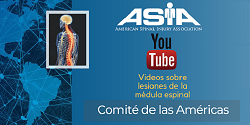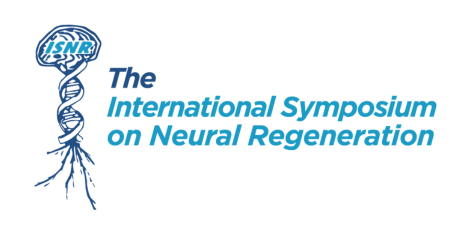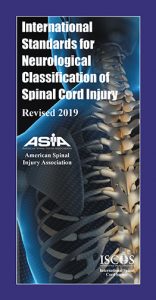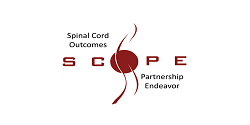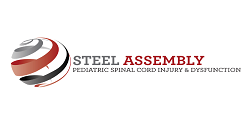1. Improving Access to Primary Care After Spinal Cord Injury
Three broad themes have been identified that limit PCPs in providing good quality care: physical barriers; attitudes, knowledge, and expertise; and systemic barriers. Making significant physical alterations in every primary care clinic is not realistic, but solutions such as seeking out community partnerships that offer accessibility, transportation, and facilitate scheduling appointments can mitigate some access issues.
2a. Social Justice and Health Care Professionals
People living with SCI face remediable obstacles to health equity in a variety of health settings, including primary and specialty care.
Better health care outcomes for people with SCI are possible when primary care physicians and providers become advocates for their patients with SCI.
3. Pediatric SCI Patients
SCI in youth presents with unique manifestations and complications as compared to adult-onset SCI. The primary care provider must help orchestrate the multitude of health care providers involved in managing the youth with SCI and in so doing ensure that the goal of a full and productive life remains a guiding principle.
4. Wheelchair Prescriptions for SCI Patients
For many individuals with SCI, their PCP handles the majority of their medical concerns, including supporting acquisition of a wheelchair or renewing their wheelchair prescription.
5. Monitoring of Neurogenic Bladder in SCI Patients
PCPs should be aware of SCI-related NLUTD, its complications, management, and surveillance recommendations, and when to refer to a specialist.
Goals of management are prevention of upper urinary tract deterioration; continence; preservation of quality of life; and prevention or early recognition of symptomatic UTIs and secondary complications that are associated with significant health care system costs due to preventable emergency department visits and hospitalizations.
6. Managing Respiratory Health in Subacute and Chronic SCI Patients
Respiratory complications following spinal cord injury (SCI) have remained the leading cause of death across the lifespan and are one of the most common reasons for hospitalization.
Complications from altered respiratory physiology after SCI include atelectasis, pneumonia, venous thromboembolic disease, and sleep-disordered breathing.
7. Autonomic Dysreflexia and Orthostatic Hypotension in SCI Patients
SCI disrupts the crucial “crosstalk” between the spinal autonomic nervous system and supraspinal control centers. Therefore, SCI may result not only in motor paralysis but also in potentially life-threatening impairments of autonomic functions including, but not limited to, blood pressure regulation.
Autonomic Dysreflexia AD is a potentially life-threatening emergency that can occur in individuals with SCI at the level of T6 and above but that has been reported in patients with SCI as low as T8-T12.
8. Bone Health and Osteoporosis SCI Patients
Spinal cord injury–related fractures occur most commonly around the knee (distal femur/proximal tibia).
All adults with SCI should have a DXA (dual-energy x-ray absorptiometry) scan of the total hip, proximal tibia, and distal femur in order to diagnose osteoporosis, predict lower extremity fracture risk, and monitor response to therapy.
9. Pain After Spinal Cord Injury
Screening and Management for this secondary complication of SCI
The unique characteristics of pain associated with SCI may cause uncertainty in evaluating and managing these pain conditions. The 2 broad categories that PCPs can aim to understand are nociceptive and neuropathic pain.
Pain can also be triggered by factors caused by the SCI. Therefore, a thorough evaluation of the possible role of constipation, bladder irritation or distension, muscle spasms, prolonged sitting, or other potential triggering factors are important for optimal pain management.
10. Sexual Healthcare
Basic sexual health knowledge and beyond: The plumbing, passion, practicing, and procreation elements PCPs can address. Breathe.
You may not know all the answers. However, you can listen, validate the concern, investigate, and provide information.
11. Depression After Spinal Cord Injury: Is It Normal? Do We Treat It? And How?
Depression tends to be undertreated in people with SCI, Depression is mistakenly viewed as an expected reaction to severe disability or is confused with grief. Depression and grief are distinguishable, and the Patient Health Questionnaire-9 is a reliable and valid screen for major depression in this population.
Grief symptoms are distinct from depressive symptoms and do not merit treatment within the first year following SCI.
During the first year after SCI, depression follows one of four trajectories: chronic (12.5%), delayed (12.8%), improved (23.9%), and nondepressed, otherwise known as “resilient” (50.8%).2 As a result, we can see that resilience, not depression, is typical following SCI, while the risk of depression is elevated in this population.
12. PROBLEMATIC SPASTICITY: The first step in solving a problem is recognizing there is one.
Muscle spasticity is a common sequela of SCI, with an estimated prevalence of 65% to 93% at 1-year post injury. For the general practitioner, the challenge lies in identifying problematic spasticity, knowing when to treat and when not to treat, and formulating a treatment plan that will meet patient goals.
Identify with the patient the potential triggers of spasticity: Common culprits: Bladder, bowel, and skin problems such as UTIs, constipation, and wounds. Sunburn, menstrual cramps/ovulation, ingrown toenails, gallstones and other culprits are a few more.
13. Clinical Needs of Women with Spinal Cord Injury
High, Narrow & Short: Exam Tables Remain A Structural Barrier to Gynecological Care
Ninety percent of people with SCI consider their primary care doctor to be their regular doctor; however, there are significant gaps in access to equitable primary care due to lack of provider comfort and expertise in disability-specific issues; physical exam equity barriers; and health care costs. Primary care for women with SCI encompasses the same women’s health maintenance preventive measures as those for the general population, but there are specific needs that should be addressed.
14. Neurogenic Bowel Dysfunction Management in Spinal Cord Injury
Due to sensory deficits and impairment of anal sphincter control, people with SCI need scheduled bowel emptying for social continence. Oral medications are used to modulate stool consistency. To avoid incontinence and diarrhea, avoid overuse of oral agents.
Assess all aspects of the client’s bowel program including oral medication, diet, rectal interventions, and frequency of bowel movements. Ask about the amount of time required for bowel emptying. Assess the impact of potential incontinence, autonomic dysreflexia due to constipation or rectal irritation, and other bowel complications on quality of life.
15. Prevention and Management of Pressure Injury and Skin Breakdown in People With Spinal Cord Injury
Skin breakdown, including burns and pressure injuries (PrIs), is a devastating complication of SCI.
Perform a full skin exam on initial evaluation and annually.
[Chronic] wounds place the person with SCI at high risk of infections, sepsis, and death. Prevention requires individualized education. Assessment requires an accurate description of wound type/PrI stage, location, size, wound bed, wound margin, epithelialization, exudate, and peri-wound condition. PrIs should be staged using the National Pressure Injury Advisory Panel (NPIAP) staging system. Successful treatment is multifactorial and wound management requires optimal wound bed preparation, pressure off-loading, and access to surgical specialists if needed.
16. Shoulder Pain After Spinal Cord Injury
Shoulder pain is a common occurrence after spinal cord injury (SCI) and can have significant negative effects on health and function as many individuals with SCI are reliant on their upper extremities for mobility and selfcare activities.
Routinely screen for shoulder pain using the Wheelchair User’s Shoulder Pain Index. Recommend ongoing stretching exercises to maintain shoulder joint flexibility and strengthening exercise for rotator cuff, scapular stabilizers, and thoraco-humeral depressor muscles. Ensure optimized postures and performance techniques to reduce shoulder demands during wheelchair propulsion, depression transfers, and ischial pressure reliefs.
17. Diet and Nutrition After Spinal Cord Injury
Physiological changes that occur after spinal cord injury (SCI) are profound and affect almost every organ system in the human body. Energy balance is significantly altered due to motor paralysis, spasticity or flaccidity, neurogenic sarcopenia, neurogenic osteopenia, sympathetic nervous system disruption, and blunted anabolism. Energy expenditure is markedly reduced, whereas hypothalamic control of appetite and satiety is diminished, resulting in discordant energy intake. Ultimately, neurogenic obesity ensues as the result of a positive energy balance.
This article reviews current literature regarding nutritional requirements for SCI and provides a straightforward plan for implementing more rigorous dietary interventions meant to address the obesity crisis in this especially vulnerable population.
18. Vascular Disease, Dyslipidemia, and Glycemic Dysregulation in Chronic Spinal Cord Injury
Individuals with chronic spinal cord injury (SCI) are predisposed to accelerated atherogenesis, dyslipidemia, and glycemic dysregulation, although not enough is known about the etiologies or clinical consequences of these secondary effects of paralysis. While guidelines for the detection and treatment of cardiometabolic disease in SCI have recently been published, there has been a historical paucity of data-driven approaches to these conditions. This article will provide a review of both guideline driven and informal recommendations addressing the clinical care of people living with SCI.
19. A Primary Care Provider’s Guide to Preventive Health After Spinal Cord Injury
Provide evidence-based general preventive care: for immunization, Cancer screening, and Cardiovascular and Metabolic health 2. Review and provide preventive care for common secondary health issues resulting from SCI: urohealth, bowel, autonomic dysfunction, respiratory health, sexual and reproductive health, bone health, skin integrity, mental health, pain, spasticity, musculoskeletal conditions.

